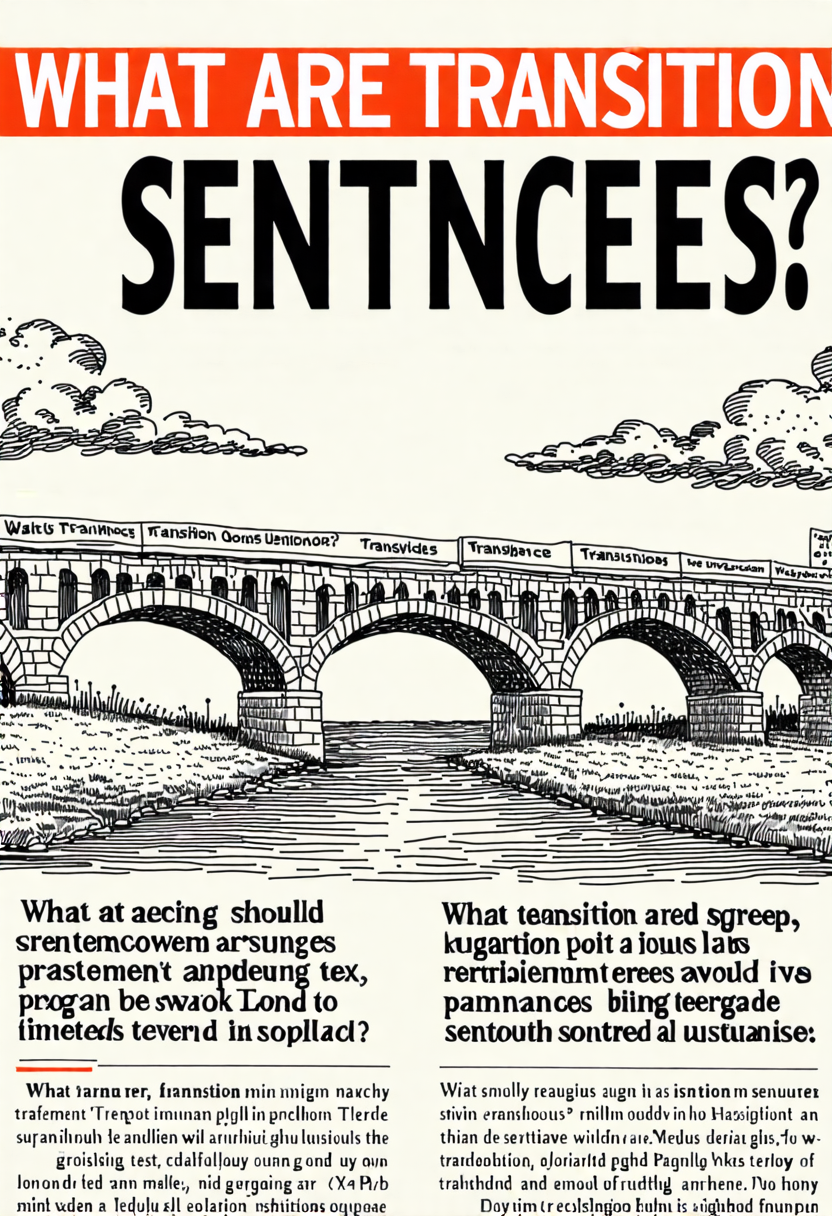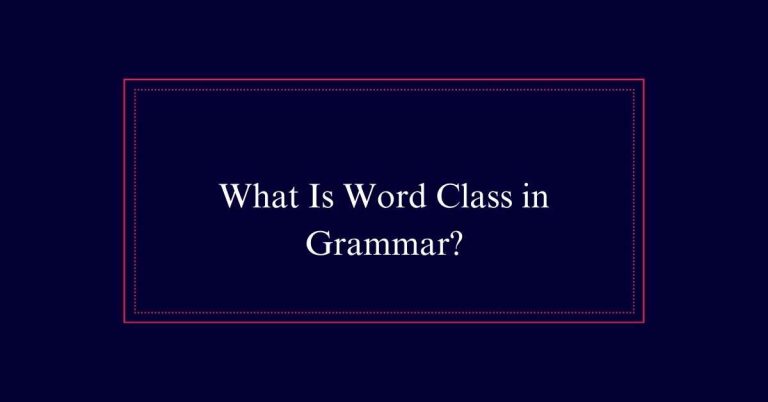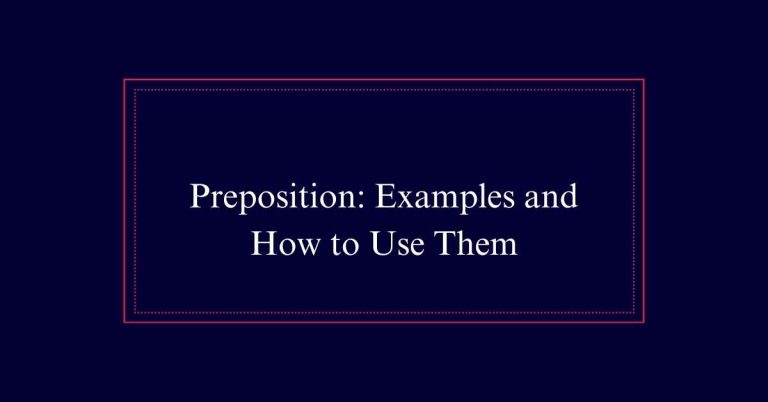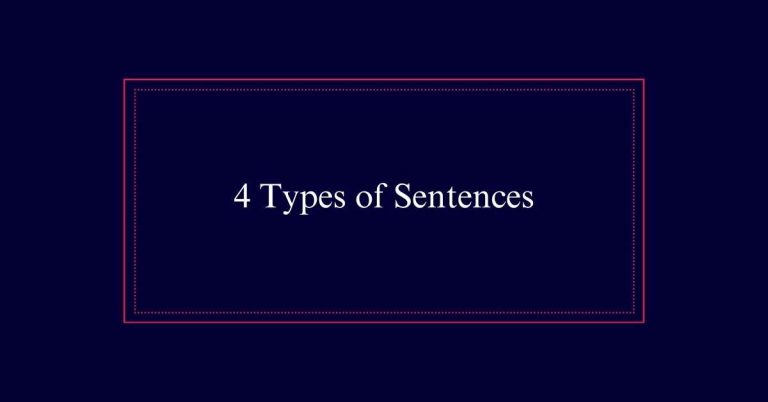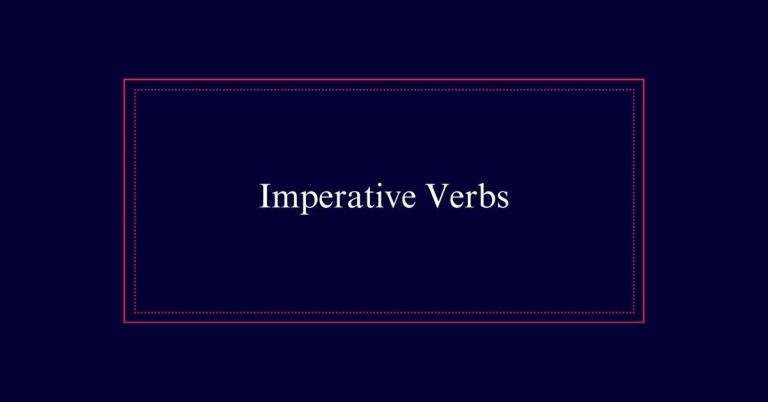What are Transition Sentences?
Connecting sentences are essential for linking ideas, clarifying relationships, and ensuring a smooth flow in writing. They prevent confusion, enhance readability, and guide the reader through arguments or narratives. Common types include additive, comparative, cause-and-effect, and sequential connections. Effective linking words and phrases like ‘furthermore,’ ‘however,’ and ‘therefore’ help maintain coherence.
What Are Transition Sentences?
Connection sentences, also known as pivotal sentences, are essential components in writing. They act as bridges between sentences and paragraphs, clarifying the relationships between ideas. Pivotal sentences help the reader follow the writer’s train of thought by indicating similarities, sequences, emphasis, or cause-and-effect relationships. Specific words like however, despite, and in contrast often serve as pivotal points. By connecting ideas smoothly, pivotal sentences enhance the logical flow of the text, improving readability and preventing confusion.
Without pivotal sentences, writing can appear disjointed and hard to follow, disrupting the reader’s understanding. Therefore, pivotal sentences are crucial for coherent and effective writing.
Importance of Transition Sentences
Understanding the significance of these pivotal sentences highlights their role in enhancing the clarity and coherence of writing.
Connective sentences act as bridges between ideas, ensuring a smooth flow from one point to the next. They help readers understand the relationships between different concepts, making the text easier to follow.
Without effective linking sentences, writing can appear disjointed and confusing. They guide the reader through the argument or narrative, maintaining engagement and aiding comprehension.
Types of Transition Sentences
There are several types of connection sentences that serve different purposes in writing. Sequential progression sentences guide readers through the order of events or steps, enhancing clarity.
Comparative links highlight similarities and differences between ideas, aiding in contrast and comparison.
Cause-and-effect shifts explain reasons and consequences, establishing logical relationships.
Additive connectors introduce additional information or reinforce points, ensuring completeness.
Emphatic shifts stress the importance of particular ideas, drawing attention to key concepts.
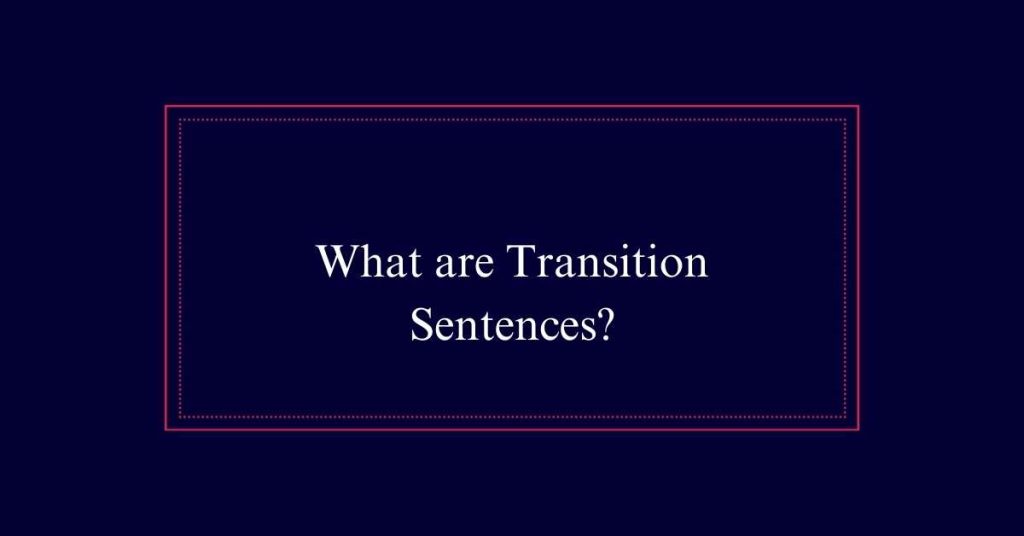
Finally, connecting summaries provide a brief recap of discussed points, preparing readers for new information.
Each type of connecting sentence helps to create a cohesive and well-structured narrative, making the text easier to follow and understand.
Transition Words and Phrases
Connective words and phrases are essential tools for guiding readers through the flow of ideas in writing. They link sentences and paragraphs, ensuring smooth connections and coherent arguments. Connectors like ‘furthermore,’ ‘moreover,’ and ‘also’ add information or reinforce ideas.
Expressions such as ‘however,’ ‘on the other hand,’ and ‘nevertheless‘ highlight differences or contradictions. Terms like ‘therefore,’ ‘because,’ and ‘consequently’ indicate a causal relationship.
Using these connective words effectively enhances readability and strengthens the logical flow of the text. They provide clear signals to the reader, ensuring a more engaging and understandable narrative.
Creating Effective Transitions
Crafting effective connections is crucial for guaranteeing a smooth and logical flow in your writing. To create effective connections, use clear and concise linkage words and phrases. These elements act as bridges between your ideas, helping to guide your readers seamlessly from one point to the next.
Consider the relationship between your ideas when selecting linkage words: for example, use ‘therefore’ to show cause and effect, or ‘however’ to indicate contrast. Additionally, make sure that each connection fits naturally within the context of your sentence.
Practice and review your writing to identify areas where connections can enhance clarity and coherence.
Transition Sentences Between Sections
In addition to connecting individual ideas, clear linkage is essential for smoothly guiding readers between larger sections of your work. Bridge sentences between sections help maintain the logical flow and coherence of your writing. They prepare readers for shifts in focus and guarantee a seamless reading experience.
Consider these tips:
- Summarize Key Points: Briefly summarize the main ideas of the previous section before introducing new concepts.
- Highlight Connections: Show how the upcoming section relates to the previous one, emphasizing logical progression.
- Use Bridge Phrases: Phrases like “moving forward,” “in the next section,” or “building on this idea” guide readers through your text.
Improving Paragraph Coherence
Ensuring smooth progressions within paragraphs is essential for maintaining coherence and guiding the reader through your ideas. Linking sentences play a pivotal role in connecting sentences seamlessly, reducing choppiness and enhancing flow. Consistency in connections helps clarify relationships between concepts and maintains the reader’s engagement.
| Connection Type | Example Phrase |
|---|---|
| Addition | Additionally, |
| Contrast | Conversely, |
| Sequence | Afterwards, |
Incorporating these connections makes it easier for readers to follow the narrative. Effective use of linking sentences ensures that each idea smoothly leads to the next, creating a coherent and logical progression of thoughts.
Making Ideas Flow Smoothly
Effective connections are essential for making ideas flow smoothly in writing. Bridge sentences help achieve this by linking thoughts and guiding readers through the narrative. They guarantee that each idea logically follows the previous one, creating a cohesive and understandable text.
For instance, using phrases like ‘in addition’ or ‘for example’ connects related ideas, while ‘however’ signals a contrast. This clarity prevents disjointed writing, maintaining reader engagement and comprehension. Without these links, writing can appear fragmented and confusing.
Hence, incorporating well-chosen bridge sentences is vital for smooth idea progression. This practice enhances the overall readability and coherence of the text, making it more accessible and enjoyable for the audience.
Enhancing Reader Engagement
Connecting sentences are crucial for maintaining reader engagement and guiding them through the text effectively. They serve to link ideas cohesively, ensuring that the reader can follow the narrative without confusion. By using coherence sentences, writers create a seamless flow that enhances understanding and engagement.
Here are three key benefits of using effective coherence sentences:
- Enhanced Coherence: They improve the logical flow of the text, making it more coherent.
- Increased Readability: They break down complex ideas into digestible parts, enhancing readability.
- Improved Persuasiveness: They help build compelling arguments by clearly connecting supporting points.
